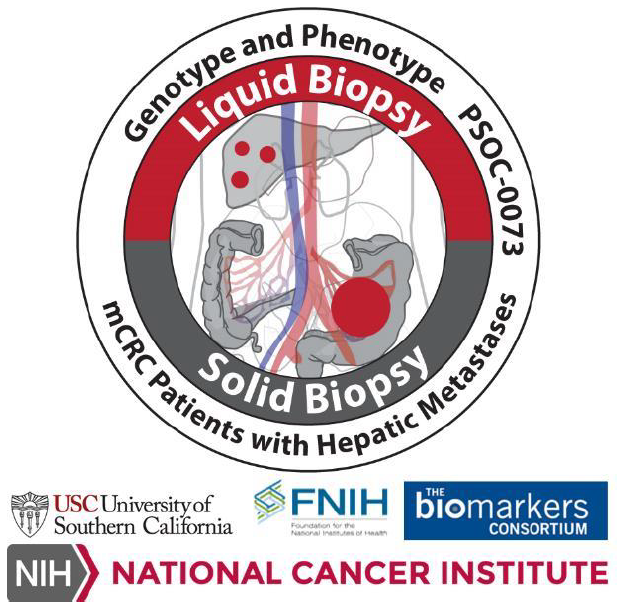
SINGLE CELL CORRELATION ANALYSIS FOR LIQUID AND SOLID BIOPSIES IN METASTATIC COLORECTAL CANCER
Single cell correlation analysis for liquid and solid biopsies in metastatic colorectal cancer
Treatment of cancer patients is transitioning to personalized strategies using targeted drugs with the required companion biomarkers.
Many current biomarkers are tissue-based, requiring a solid biopsy and limiting sampling frequency.
Given this, there is significant interest in determining whether non-invasive, blood-based liquid biopsies,
utilizing measurements of factors that exist in the blood such as circulating cells,
reflect solid tumors and can serve as complement or substitutes for solid tumor biopsies.
Colorectal cancer with hepatic metastasis (mCRC) is one scenario where metastatic patients routinely undergo surgical resection,
providing an opportunity for accessible tissue and simultaneous blood sampling.
Blood and tumor touch preparations (touch preps; TP) were collected from patients undergoing hepatic resection of metastatic CRC (mCRC)
at 3 clinical sites with the purpose of determining the morphometric concordance of liquid and solid biopsy cells in this disease setting.
The High-Definition Single Cell Assay (HD-SCA) workflow was utilized for analysis of mCRC liquid and solid biopsies using a 4-color assay
including the colon specific marker CDX2 and morphometric analysis of digital pathology quality images.
Data indicates both liquid and solid mCRC biopsy cells displayed high inter- and intrapatient pleomorphism, with several subgroups being define
d on the basis of size,
shape and protein expression. The concordance of liquid and solid biopsy cells was highly patient dependent and varied between 0.1-0.9.
Morphometric features including e.g. cell and nuclear area and roundness, were similar in the two sample types, indicating that the liquid bio
psy cells do
not represent a distinct morphometric subpopulation from cells of the solid tumor.
Furthermore, the concentration of liquid biopsy cells decreased significantly after mCRC resection and correlated with tumor burden as well as
necrosis of hepatic lesions.
This suggests that liquid biopsy cells can be informative biomarkers in the mCRC setting.

This study was funded by FNIH Grant USC16HSC.
Link to published PDF
Pivot data viewer:
Samples from 10 patients were included in the liquid and solid biopsy correlation analysis. For 3 of these patients,
both primary and metastatic solid biopsies had been collected at the time of surgery. Cells were relocated and imaged at 40X magnification
using identical optical setup and exposure times for liquid and solid biopsy cells. A total of 1,058 CRC cells were analyzed with an average
of 43 cells per tissue type (HD-CTCs, hepatic metastasis and primary tumor) per patient.
Click for Pivot
Click on the link above to start the application. The pane along the left-hand side displays the parameters that are used to filter the data. T he large area in the middle displays images of cells that meet the criteria chosen from the left-hand panel. Clicking on a single image in the center pane will zoom in on that cell and display additional information for the chosen cell in the right-hand panel.
Inclusion criteria for analysis:
Power analysis determined that the liquid biopsies should have a minimum of 20 HDCTCs on the first 2 scanned slides to be included. For representative sampling of the tumor, slides with >4 monolayer clusters of intact tumor cells were included.
High-Definition Single-Cell Assay (HD-SCA) analysis produces both image and numerical data. It can be di fficult to filter through the diverse data types to find data fitting specific parameters. Towards that end, we have developed a graphical web- based approach to enable researchers to quickly obtain a subset of image and associated assay data based on the filters chosen. Pivot, a Micros oft application, is used to provide a graphical interface that enable non-computer savvy users to quickly find the data they want.